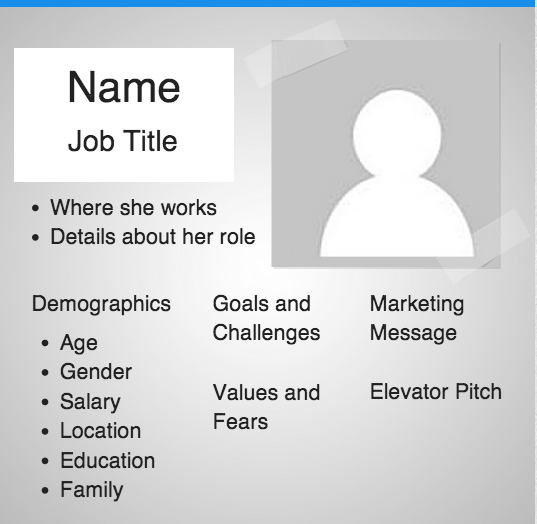Jamie Schneider Digital Strategist for the North American Division. Jacklyn Ruth Digital Strategies Intern for the North American Division People often ask me, “How do I make my content more relevant to young people?” My response is, “Why are you asking me, I’m 35!” If you want to reach young people, involve them, and listen to them. It stands to reason that young adults would know best how they can be reached and what is the most relevant content for them. I find myself in-between generations. I’m not really a Gen X-er, nor am I a millennial. I grew up in an analog world but became an early adopter of emerging technologies in my 20s. I also learned patience while waiting for the AOL CD to load so I could connect online (Don't understand this reference? Click here while I go check the mirror for wrinkles). I played outside all day without supervision (at that time it was still called childhood, not free-range parenting) and if I wanted to know what my friends were up to, I showed up at their house (nowadays that would be considered rude and/or creepy). Bullies were confined to schools, and informal sex ed was limited to school yard rumors. My micro-generation has now been termed Xennials or, my favorite, The Oregon Trail Generation. Perhaps this is why I feel well suited to act as a bridge between generations. I’ve lived my life there, not really being one or the other. As a digital strategist, this is a unique advantage. I have learned to work with both, and find value in either. Millennials want to hear the wisdom of the older generation, and they can be eager to learn. They also need respect and understanding of their unique circumstances. The issues I faced as a teenager in the ‘90s are nothing like what they are dealing with now. I can’t imagine or relate. So what would make me think I know what content is most relevant to them? No, my role is different. I have knowledge regarding strategy, communications, advertising, planning, etc. They speak the right language and understand the culture; they simply need guidance. Spiritually, they need wisdom from the older, more experienced generations. But they know best how to translate it to reach their own. You’re not going to like this, but it’s not about you. It can’t all come from us. It’s about them and what they need. It’s about the language they speak and issues they face. Now, there’s a lot of knowledge that can be passed onto them. They need guidance to achieve goals while maintaining the freedom to be creative and relevant in ways that make sense to them. It’s my job to equip and train young people to implement a comprehensive digital strategy: empowering them to become life-long digital evangelists, while challenging them to think differently. This means letting go of complete control, letting them do what they think is best. But before you cringe, let’s remember that the Seventh-day Adventist church was founded by teenagers. They are capable. Society tends to infantize them, instead of recognize them as young adults with passion, energy, and drive. They may want to do things differently, and that’s okay. If it goes badly, we can help guide them out of a predicament, but We can’t both reach them while simultaneously excluding them. The family unit was meant to be more than just a mother, father, and children. Traditionally, a family unit consisted of multiple generations working together as one for shared goals, survival, support, and spiritual understanding. We don’t have this structure in North America anymore. Some “smart” social scientists convinced society to separate children and people by age. Over time, this broke down the family unit of society. Not only did we accept this model in our schools, but in our churches. We now have an us-versus-them mentality when it comes to people outside our age bracket. What I’m advocating for is bringing back that cross-generational model for evangelism. Let the generations not only coexist, but co-function in our churches and community. So my answer to you is: ask a young person…Now for a word from our current resident millennial, Jacklyn Ruth: Jackie talking now... To me, it seems obvious that figuring out how to reach my generation means actually asking one of us. It would be like me trying to reach my grandparents’ generation and not asking them for help. I don’t fully understand them or the values they grew up with. Now, I’m not saying that I know everything, but I have interacted with people my age for a while. When deciding on what to say or what to post to reach my generation, it’s mostly just me talking to myself. How would I want to hear this? What topics do I want to hear about? I’ve also heard what some of my peers have to say, so I know some of the topics millennials would like to hear more about. I think my generation is the greatest untapped resource. We are consistently condemned by older adults for being full of ourselves or glued to our phones. You say you want to keep us in the church? Then let us help you. Reaching people online is not about becoming internet famous, so if you let us help, I’m sure we could make a real positive difference for Christ. You want to reach us. You want to be relevant, but don’t know how. Listen. Give us the space to share our insights and listen to our ideas. Then, let us do it. We have the understanding, you have the know-how. Show us how to do it, and we can do it. There is no one better to reach my generation than my generation. Don’t believe me (Jamie Jean Schneider speaking now), here are some real-life examples…
To help with #Gorgeous2God, a blog aimed at teen girls, we brought in a young female intern to help with social media and to hopefully increase relevance. Guess what? Our target audience liked her posts better than mine on social media. Of course they did; she’s closer to their age and speaks the same language. That’s not a failing on my part. I can’t do everything, nor am I all knowing. My job is to teach, guide, and mentor. Also, #iBelieveBible has now reached over 65,000 followers on Facebook. Why is it successful? The #iBelieveBible project is built upon content created by young adults for young adults. Young people are choosing, directing, and creating the content with strategic guidance and input from the older generation. See the pattern? Practically, what you should do is include young people on your creative team. If you produce videos, involve them. Oh, and actually include their input. They will figure out quickly if you’re disregarding everything they say. It’s okay to have the older generation in videos too, but it should be a dialogue between the generations. Agree? Disagree? Have a different opinion? Share your thoughts with #DigitalEvangelism. Jacklyn RuthDigital Strategies Intern for the North American Division When creating and executing a social media campaign, think of who you are speaking to and how to best convey that message to different audience groups. We do this in everyday conversations without even knowing it. It is natural to speak differently to a child than to an adult. There is a difference in word usage and tone of voice. Children may need to hear something simplified, while an adult can understand more abstract ideas. The same concept applies to social media. When communicating to social media audiences, visualize actual people--their interests, culture, wants, needs, and expectations--to refine your voice. Depending on what is being promoted, you will create unique people and personas to represent different target groups. For example, the Society of Adventist Communicators Conference is promoted to and attended by students, teachers, and working professionals. Each target group has different reasons for attending the conference that range from continuing education to networking. Therefore, you would create personas representing students, teachers, and professionals identifying their specific wants and needs. Determining your audience personas can act as a guide to creating content that will be the most relevant and useful to your various audience groups. According to The Guardian, personas can be simply defined as: “A fictional character that communicates the primary characteristics or a group or segment of your audience and takes into consideration needs, demographics, motivations, and environments.” This is the kind of information you will want for each persona: (Photo from: https://blog.bufferapp.com/marketing-personas-beginners-guide) Some of this information can be found in your Google Analytics account. There you can find information on audience age, gender, salary, and location most of your audience is coming from. Google Analytics can also give you the interests of most of your audience. Learn more about Google Analytics. This information is key in creating your personas. You can also glean consumer information from your social media insights, and even one-on-one interviews. You can learn a lot from people who are part of your target audience that you engage with directly. The best personas combine both quantitative and qualitative information. This exercise is about putting yourself in the consumers’ shoes. Get to know what they want so you can meet their needs effectively. Social media is about connecting people with people to create a collective story or conversation. Understanding your audience is vital to bridging the gap and building meaningful relationships that result in something to enjoy in the real world. After you have finished your research, begin creating your personas. Here is an example of what a detailed social media persona might look like: (Photo pulled from: https://blog.bufferapp.com/marketing-personas-beginners-guide) Now, when applying this idea to Adventist events, such as Pathway to Health, (a ministry that provides entirely free, mobile, multi-specialty clinics that offer medical, surgical, dental, and eye care, along with other critical services), you can modify the example we have above. For instance, when promoting Pathway to Health, we must consider who will be coming, such as the under insured, struggling families, and the homeless, and who will be volunteering to help, such as: doctors, local volunteers, and pastors. Below is an outline of one person who might want to volunteer if the right information was put in front of them. You can even add a fake picture of them if you so desire. Name: Pastor Aubrey Who: A local youth pastor looking for a way to get church and kids involved in service. Age: 29 Yearly revenue: $30,000 Goals and challenges: Goal to get church involved in the community. Challenge is can’t find a way to get involved. Interests: Volunteering, church, youth ministry, service, community events, and hiking. Promotion media: church networks, social media, local conferences Message: We need everyone at Pathway to Health! Medical and non-medical volunteers to serve the needy in the community. Show the love of Christ through compassion. Knowing this information, how are you going to word a social media post to get them to help? You could emphasize the need for volunteers (even if they don’t have any medical experience) and what things are needed.
This tactic serves two purposes: First, it gets the creators to get into character. Second, it can help you find previously undetected tactical opportunities to promote your product, service, or institution. In summary, social media personas are developed based on your target audience. The key is finding out what those people want and need; the rest is simply compiling those qualities into a made-up person. As a church, we need to constantly find ways to reach our audience for the kingdom in the best, most efficient way possible. And social media personas help us step into other’s shoes so we can better understand them. Don’t forget to tag us at #DigitalEvangelism as you develop your creative personas. Jacklyn RuthDigital Strategies Intern for the North American Division So, you use Instagram on a regular basis. You tag your #OOTD and share with tons of people, what you are eating daily. And since Snapchat doesn’t seem to mind being copied, you can post all your funny dog faces and flower crowns on an Instagram story. But have you ever thought about being mindful with your Instagram feed? Have you taken the time to decide on a theme? Did you know that you can style your Instagram grid to look appealing to your followers and stand out as unique? First off… What will your theme be? In other words, what are you passionate about? Personally, I have two IG accounts, one is dedicated to my book blog, and the other is my personal account. I have to decide: do I post about events I attend on my private IG? Places I’ve been? Decide on your niche and you are half-way there. Style You’ve decided what you want to post…now how do you post it? Consistency is key.
More Advanced Style If you want to get more advanced, there are a few techniques you can implement onto your feed.
These are just a few ideas you can use to make your Instagram feed stand out. Borrow these ideas or modify them to your liking. The feed is your canvas.
Have a creative idea for a unique Instagram look? Share it with us using #DigitalEvangelism. Jacklyn RuthDigital Strategies Intern for the North American Division Projects take time to create. Finding the images to support them should not add to the stress. Luckily, there are lots of places online where you can find free stock images for your blog, company, project, social media platform or website. Guidelines for Choosing Good Photos
There are several free (or low cost) image editing and design programs.
Canva - Free and low cost images Stock photos provided by Canva.com, a web-based design software ideal for social media and other digital formats. A great resource for design tools, templates, editing, design tutorials and more. Burst (by Shopify) - Free Burst is a resource from Shopify that provides free stock photos for entrepreneurs. It has photos of niche interests, everything from DIY beard oil to Aliexpress LED sneakers, but you can also find more general photographs. Death to Stock Photos – Free, but pay for premium access Every month a photo pack of 10 photos within a certain category will be delivered to your inbox. The goal of Death to Stock Photos is to bring you a variety of options to use for your mockups, blog posts, or social media posts. Death to Stock Photos uses their own license which you can read on their webpage. Epicantus - Free Epicantus contains free original photography by Daria. You can use these hi-res photos for your landing pages, blog posts, and designs. All photos are released under creative commons CC0. FoodiesFeed – Free, but pay for premium access FoodiesFeed offers thousands of beautiful and realistic food pictures in high resolution. It’s the perfect stock photo site for food bloggers. Freestocks.org - Free Freestocks has a wide range of pictures, from animals to kids to food and people. All images are released under Creative Commons CC0. Gratisography - Free Gratisography offers free high-resolution pictures you can use on your personal and commercial projects. New pictures are added weekly and are free of copyright restrictions. Life of Pix - Free Life of Pix is a resource created by the LEEROY creative agency, offering free high-resolution photos with no copyright restrictions. New pictures are added weekly. Little Visuals – Free subscription; donation optional All photos posted on Little Visuals were released under the creative commons license public domain dedication. They have lots of nature and landscape photos. MMT STock - Free MMT Stock is a collection of high-resolution photos provided by Jeffrey Betts. Jeffrey likes to share photos of computers and workspaces as well as flowers and nature. All photos are released under Creative Commons CC0. Negative Space – Free email subscription and free download Negative Space provides 20 new photos every week released under Creative Commons CC0. The pictures are searchable and can be sorted by category, copy space, and color. New Old Stock - Free These pictures all have a vintage vibe and are separated into categories. They are mostly black and white pictures of people and places. Pexels - Free Pexels has lots of free images to use and a wide range of categories, from people to things. It’s very easy to download. Picography – Free, $15/month for premium Picography contains beautiful free stock photos submitted by Dave Meier and various other photographers. All photos are released under Creative Commons CC0. Pikwizard - Free This site offers over 100,000 completely free images. Pixabay - Free Pixabay offers a large collection of free stock photos, vectors, and art illustrations. All photos are released under Creative Commons CC0. StockSnap.io - Free StockSnap.io has a large selection of beautiful free stock photos and high-resolution images. The site also tracks views and downloads so you can find the most popular photos available. Unsplash - Free Unsplash has lots of high resolution photos and updates them often. They have lots of landscapes and people. Wiki Commons - Free Wiki Commons has free images and highlights the image of the day. The site sponsors a photography submission challenge and offers a wide range of photos. Be sure to read the permissions on the photos you choose before using them. When cropping and editing your pictures: Use the rule of thirds. The rule of thirds, however, is a guideline, not an absolute. Important elements of the picture should be near the intersecting lines and horizons should match up with one of the horizontal lines. This technique creates tension, energy, and increases interest. Apps for editing images on the fly:
Overlaying Text If you want to achieve a similar look to your images as the sample above, there are ways to do it without being a professional designer. There are several apps that will help you place your copy onto your picture.
Click here to learn about copyright and trademark basics. Leave your comments below and share your creations with us using #DigitalEvangelism. |
Archives
August 2020
Categories
All
|
- Home
- BLOG
-
RESOURCES
-
RESOURCE MENU
>
- ADVENTIST IDENTITY GUIDELINES
- BIG DATA RESOURCES
- BRANDING, IMAGE & DESIGN RESOURCES
- CHURCH/MINISTRY SPECIFIC RESOURCES
- COPYRIGHT & TRADEMARK BASICS
- COURSES
- EMAIL RESOURCES
- GUIDANCE FOR HIRING SOCIAL MEDIA POSITIONS
- PODCASTS
- REPORTS & CASE STUDIES
- SOCIAL MEDIA RESOURCES
- (SOCIAL) VIDEO RESOURCES >
- TEXTING 4 CHURCHES
- TRACKING & ANALTYICS
- WATCH VIDEOS & TUTORIALS
- WEBSITE TIPS
- SOCIAL MEDIA GUIDELINES
-
RESOURCE MENU
>
- SEO
- Digital Discipleship & Evangelism
- COVID-19 RESOURCES
- eNEWSLETTER



















 RSS Feed
RSS Feed